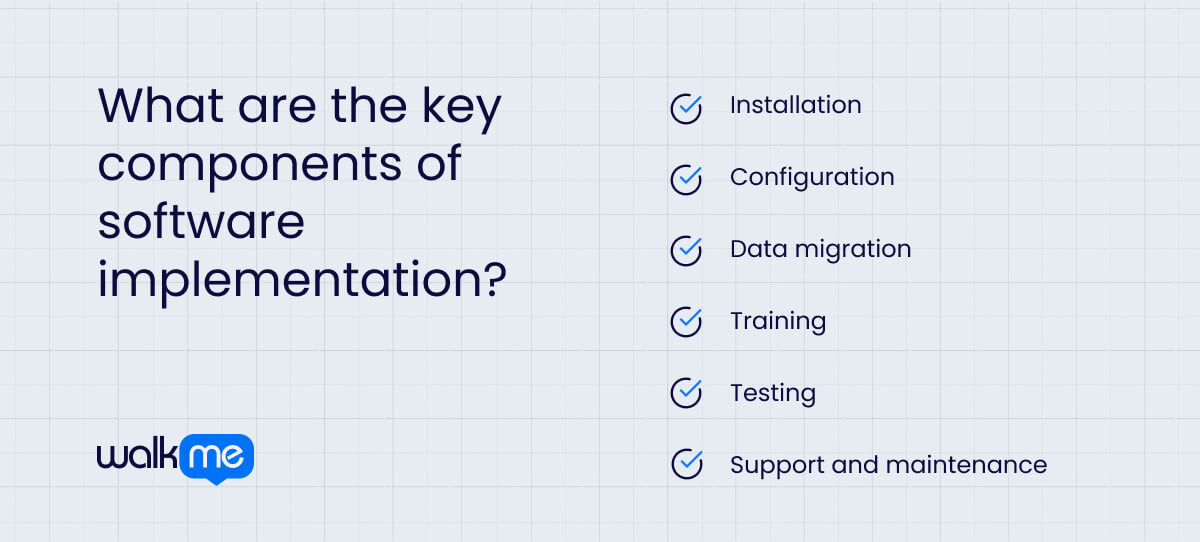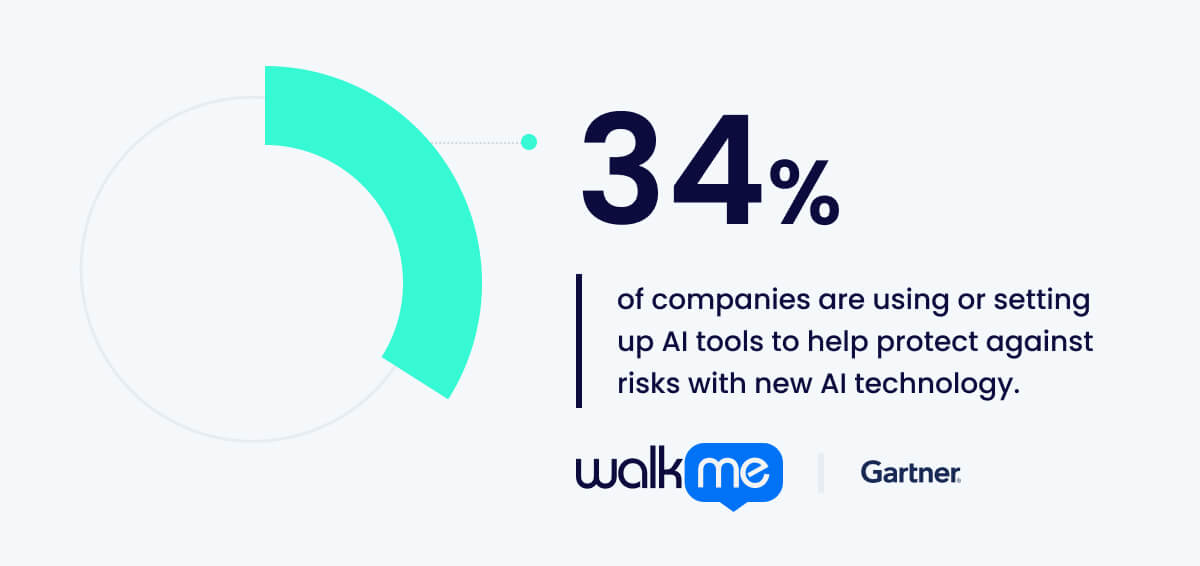What is software implementation?
Software implementation is when new software is set up so people can use it at work. It takes the software from being just developed to actually running smoothly in the workplace.

The process involves installing the software, arranging it to fit the company’s needs, and teaching people how to use it. Important information also needs to be moved to the new system.
The main goal of software implementation is to make sure the software works as it should for the business. It needs to be set up right, and everyone needs to know how to use it.
When the setup is done well, workers can find the software helpful. It helps them do their daily tasks without any problems. Good software implementation makes work easier for everyone.
What are the key components of software implementation?

Knowing the key components of software implementation is important for ensuring that new software works well for a company. Each part has a specific job to do in the process, and they all work together to create a smooth user experience.
Let’s look at the key components that make software implementation successful.
Installation
The software is put onto the computers or servers that people will use at work. Installation must be done carefully to make sure everything is set up correctly. If there are any issues during installation, they need to be fixed right away so that the software can run smoothly.
Configuration
After installation, the software needs to be adjusted to fit the specific way the company operates. For example, people may change settings or add features that are important for the organization. Configuration helps make the software more useful and ensures that it supports the daily tasks of the employees.
Data migration
Important information is moved from the old system to the new software. It is essential to ensure that all relevant data is transferred accurately so that employees can access the information they need. During data migration, the team checks to make sure everything is correct, and nothing is lost.
Training
Once the software is installed and configured, users need to be trained to use it. Training helps employees understand the software’s features and functions, making them feel more comfortable and confident in using it. Good training can improve productivity and ensure that everyone knows how to get the most out of the new tool.
Testing
Before the software goes live, it needs to be tested to find problems. Testing helps identify bugs or issues that could cause users difficulties. By fixing these problems before the software is fully implemented, organizations can ensure a smoother experience for everyone.
Support and maintenance
After the software is up and running, ongoing support is necessary to help users with any issues that come up. The support can include troubleshooting problems, answering questions, and providing updates. Regular maintenance is also important to keep the software running well and to add new features as needed.
Software implementation vs. software integration
Software implementation and software integration are connected ideas, but they focus on different tasks.
- Software implementation is about getting new software ready to use for people in a company
- Software integration connects different software programs so they can share information and work together
Let’s look more closely at the differences between these two terms.
| Software implementation | Software integration | |
| Definition | When new software is set up so people in a company can use it. Steps include putting the software on computers and teaching people how it works. | When different software programs are connected so they can work together. They can share information and help each other. |
| Focus | Getting a new software system ready for use. It makes sure the software works well for everyone who needs it. | Linking different software programs. It helps them work together as a team, sharing information easily. |
| Techniques | Installing the software, setting it up, and teaching people how to use it. These steps make sure the new software is ready to go. | APIs (little tools that help programs talk to each other) and data connectors. These help different software programs share information and work together. |
| Goals | Make sure the new software is set up correctly and that everyone knows how to use it. Help people do their work better with the new tool. | Connect different software programs. Help them share information easily and work together smoothly, making things easier for users. |
| Examples of use | A company puts in new software to keep track of money and teaches workers how to use it. | A company connects its customer software with its email program so they can share customer information and send emails to the right people. |
Use cases for software implementation

Software implementation shows up in different ways in businesses. It can help companies set up new tools that make work easier and improve how teams function.
For example, Gartner highlights that many HR leaders are beginning to implement generative AI in their departments. 38% are either testing or already using AI for tasks like employee support, handling paperwork, and recruitment.
As part of the software implementation process, businesses are focusing on training employees to use the new AI tools. Proper setup and training are important for making sure the software works well in everyday tasks.
Similarly, Gartner reveals that 34% of companies are using or setting up AI tools to help protect against risks with new AI technology. As part of the setup process, businesses are also making sure they have security tools to keep everything safe.

Proper setup and security help AI work better and protect companies from problems, making AI tools more reliable for everyday tasks.
Understanding how software implementation works in real situations can be helpful. Here are three examples that show how it can be used in different business scenarios.
Customer relationship management (CRM) software
Customer relationship management (CRM) software helps a company keep track of its customers. The software collects information about customer interactions, such as emails, calls, and purchases. Once implemented, it helps salespeople understand what customers want and how to better serve them. Sales teams can build stronger relationships with customers and provide better service without having to remember everything themselves.
Project management tools
Project management tools help teams organize and track their work. When these tools are implemented, they allow team members to see what tasks need to be done, who is working on them, and when they are due. The setup helps everyone stay on the same page and makes it easier to finish projects on time. It saves time because teams don’t have to have many meetings to figure out who is completing certain tasks.
Employee onboarding software
Employee onboarding software helps new workers get started at a company. When this software is set up, it guides new employees through the steps they need to take, like filling out forms and learning about company policies. The process helps new hires feel welcome and understand their job better. It also makes the onboarding process faster and easier for the HR team, as they can focus on helping new employees rather than handling paperwork.
What are the advantages of software implementation?
Software implementation has many advantages for businesses. By setting up new software correctly, companies can improve how their teams work and make tasks easier. These benefits can help save time, reduce mistakes, and improve communication among workers.
Let’s explore the different ways that software implementation can be helpful for businesses.
Improves efficiency
Software implementation helps teams do their work better and faster by giving them the right tools. When software is set up the right way, workers can finish their jobs with less effort and fewer steps. As a result, they get better results and can focus on important projects instead of getting stuck on easy tasks.
Reduces errors
When software is set up correctly, it helps people make fewer mistakes while they work. Automatic processes can check for errors and problems, making the work more correct and trustworthy. This saves time and helps everyone feel confident in the results, which means better quality work for the company.
Enhances communication
New software makes it easier for teams to talk to each other and share important information. Tools that let people message and share files quickly allow team members to stay updated and connected, even if they work in different places. Good communication helps everyone work together better and leads to stronger teamwork.
Increases productivity
Having the right software helps workers do their jobs more easily and well. With simple processes and quick access to information, they can finish their tasks faster and take on more work without feeling tired. Increased productivity helps both the employees and the company grow and do better.
Provides better data management
Software implementation helps companies keep their information organized and easy to find. By having all data stored in one place, workers can quickly get the information they need for their jobs. With this organizational setup, teams can make better decisions because they can look at the information quickly and use it to help them.
Offers scalability
Good software can grow with the company, making it easy to change as the business gets bigger. When software is set up, it can handle more users, new features, or more data without needing a big change. Being flexible means the tools will keep working well as the company changes and grows.
Improves customer experience
When software is set up the right way, it helps companies take care of their customers better. With tools that make things easier, workers can answer customer questions and solve problems quickly. Happy customers who feel important are more likely to come back, which helps the company’s success.
Supports training and development
New software usually comes with training resources that help workers learn to use the tools. Such support can help them feel confident and improve their skills. When employees feel good at what they do, they are more likely to do their jobs well and make the company a better place.
What are the challenges of software implementation?
Now let’s explore the challenges of software implementation. While setting up new software can help businesses improve how they work, it also comes with some difficulties. Understanding these challenges is important because they can affect how smoothly the process goes and how well employees adjust to the changes.
Resistance to change
Some employees might not want to use the new software because they are used to the old way of doing things. Such resistance can slow down the process and make it harder for everyone to adjust. Time and support may be needed to help people feel comfortable with the change.
Training needs
When new software is implemented, employees often need training to use it properly. This training can take time away from their regular work and may require extra resources. Ensuring that everyone understands how to use the new tools is important for a smooth transition.
Data migration
Moving important data from old systems to the new software can be challenging. Ensuring that all the information is transferred correctly without losing anything is crucial. The process can be complicated and may require careful planning and attention to detail to avoid mistakes.
Ongoing support
After the software is set up, businesses need to provide ongoing support for users. Problems or questions may arise as employees start using the new system. A support team available to help solve issues and provide assistance is necessary for keeping everything running smoothly.